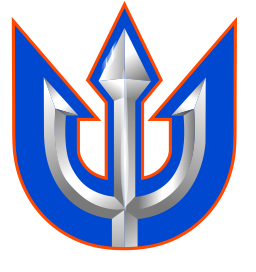13th Floor, Bay View Tower,
Plot No.7,Sector 11,
CBD Belapur-400614,
Navi Mumbai,Maharashtra(India)
+91 22 45251000
info@triguninfotech.com
INTRODUCTION
On equivalent balance with fuel, group-related expenses are a significant working cost for aircraft. Indeed, even minor mix-ups in managing work assets can bring about critical monetary misfortunes. Fortunately, transporters can save billions of dollars through more complex planning frameworks. In this article, we'll talk about the principal difficulties of a group the executives, how IT frameworks adapt to them, and what the AltexSoft group has gained for a fact with flying tasks. Affix your safety belts and put your seats in the upstanding position!
Crew arranging difficulties: blending, rostering, and bidding
Group arranging or planning is quite possibly the most testing and process escalated errands in the avionics business, and its multifaceted nature increments as team sizes and the number of flights develop. The entire cycle is regularly partitioned into two consecutive stages: matching and rostering.
Team blending, otherwise called outings or group pivots, is an arrangement of direct flights (flight legs), that starts and finishes at a similar air terminal. All in all, it's an agenda for a group that commonly ranges from one to five days. Organizers produce a bunch of pairings to plan a schedule for a month. The fundamental objective of this stage is to cover the month-to-month plan with the littlest group assets conceivable.
During the rostering or task stage, pairings and other potential exercises like preparing are doled out to genuine crewmembers, as indicated by their capabilities, get-away days, and different boundaries.
The significant piece of rostering is an offering interaction that permits pilots and airline stewards to assume some responsibility for their distributions.
By and large, team arranging should meet huge loads of complex principles and prerequisites directed by flying enactment, legally binding conditions, and individual assumptions. To make things much more confounded, each group part has between 5 to 100 declarations and licenses with various termination dates that should be kept current. Also, an ideal last program considers different subtleties like lodging expenses and addresses surprising changes, for example, postponed flights or group disease. Lastly, after all the information sources are made, the carrier should remain productive.
Team planning programming development
Until as of late, team the board in many carriers was refined physically, with just pen and paper. In light of the intricacy of the issue, it generally took a group of six to eight organizers half a month to achieve the matching cycle for an enormous aircraft.
Points Crew Management
Established in 1973 in Dubai (OAE) and occupied with building aircraft programming since 1983, AIMS Corp. is perhaps the biggest supplier of a team arranging arrangements. Its center frameworks cover a restricted arrangement of the most fundamental errands identifying with:
Crew Planning (matching developments, manual team task with mechanized lawfulness checks, essential leave, and preparing organization);
Crew Tracking (n"art-28">Pairing Generator to automatically create legal and cost-effective pairings from a flight schedule;
Crew Schedule Costs Calculation and comparison of crew costs, taking into account hotel stays, dead-heads, wages, and other costs;
Leave Management System to regulate and improve leave planning for a three-year time frame:
eCrew to provide crew members with access to their personal and company flight information via smartphones, tablets, PCs, or Interactive Voice Response (IVR).In years to come, inheritance frameworks will confront the test of cloud movement. How might this interaction look and where will it start? Here are the fundamental phases of the normal excursion:
1. Examining the programming scene and cycles to spot problem areas and distinguish highlight covers.
2. Parting a solid code into more modest administrations (SOA or microservices design) – something that Saber and Jeppesen did before moving their offices to the cloud.
3. Relocating the framework steadily, administration by administration, with the slow killing of inheritance highlights.
4. Associating administrations with APIs to make them work in a state of harmony.
5. Receiving the rewards!
 sitemap.xml
sitemap.xml